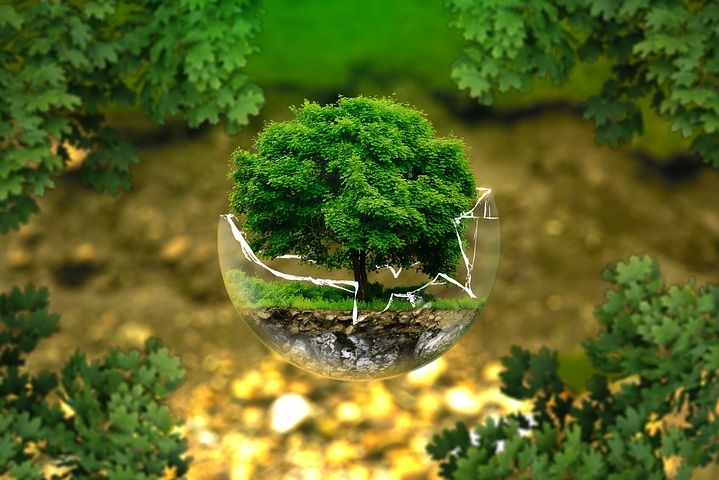The environment is our most precious resource, and protecting it requires careful monitoring and assessment of its health. Ecological indicator play an important role in tracking the changes that occur over time, enabling us to better understand how human activities are impacting the environment. This article will discuss what ecological indicators are, the types of indicators are available, the benefits of using them, and some examples of how they can be used in environmental protection. We’ll also explore why it’s so important for us as individuals to be aware of our own environmental impacts, and how we can all contribute to preserving ecosystems and biodiversity.
By using indicators to measure the health of our environment, we can identify potential problems before they become too serious. This allows us to take preventative measures that can ultimately help protect and preserve our ecosystems for future generations. With this valuable tool in hand, we can work together to ensure a better future for both people and the planet.
Types of Ecological Indicators
Indicators are used to measure and assess environmental changes. There are three main categories of indicators: physical, chemical, and biological.
Physical indicators measure the physical characteristics of an environment such as water temperature, air quality, light availability, or sedimentation. Chemical indicators measure pollutants in an environment such as heavy metals or organic compounds. Biological indicators measure living organisms in an environment such as insects or fish populations.
These three types of indicators can be used to monitor a range of environmental impacts, from human health to social systems and ecosystems. For example, physical indicators can be used to measure the effects of climate change on a particular area by monitoring changes in weather patterns or water temperature over time. Chemical indicators can be used to detect levels of air pollution in urban areas by measuring levels of particulate matter in the atmosphere. Biological indicators can be used to assess the impact that land use change has had on biodiversity by looking at changes in species abundance or distribution over time.
In addition to these three main categories, there is also a fourth type known as “ecosystem services” which measures how healthy ecosystems contribute to human well-being through services such as clean water and pollination from bees. These services are essential for our survival but often overlooked when it comes to the measurement and assessment of environmental change.
By utilizing these various types of indicators, it becomes possible for scientists and policy makers alike to gain a deeper understanding of how humans are impacting their environments and what steps need to be taken toward preserving natural resources for future generations.

Benefits of Using Indicators
Indicators are an invaluable tool for environmental protection. By providing an accurate measure of the health of an ecosystem, they enable us to better understand our impact on the environment and identify areas in need of conservation or restoration. For example, monitoring changes in species numbers over time can tell us whether a population is declining or recovering, and help us target our efforts accordingly.
Using indicators as a baseline also allows us to track long-term trends in the environment over time. This gives us valuable insight into how ecosystems respond to various changes (such as climate change or human activity) and can help inform future management decisions. Additionally, tracking changes in these indicators can be used to assess the success of existing conservation efforts, allowing us to adjust them if necessary.
By understanding these relationships, we are better able to manage resources sustainably and make informed decisions about how best to protect our natural environments. For instance, if we know that increased nutrient runoff from farms affects water quality, then we can take steps such as reducing fertilizer use or creating buffer zones around rivers and streams. Such understanding is vital for effective environmental protection.
In summary, indicators play a critical role in environmental protection by providing an accurate measure of the health of an ecosystem and helping identify areas in need of conservation or restoration. They also allow us to track long-term trends over time and assess the success of existing conservation efforts so that adjustments can be made if necessary.
Finally, they enable us to understand how environmental changes affect different ecosystems so that sound management decisions can be made with respect to resource usage and preservation efforts.

Examples of Indicators in Environmental Protection
Indicators are an invaluable tool in environmental protection, as they provide an accurate measure of the health of an ecosystem. By monitoring specific species, changes in water quality, soil composition, and fertility, bird abundance and diversity, and air pollution, we can gain a better understanding of the impact of human activities on the environment.
For example, monitoring populations of keystone species such as beavers or elephants can provide us with valuable insight into how our actions are affecting ecosystems. A decrease in their population could indicate that there is something wrong with the area’s environment – either due to human activity or natural causes – which needs to be addressed. Similarly, changes in water quality can be used to monitor changes over time and assess the impact of pollutants on aquatic life.
Soil composition and fertility is also key indicator for assessing long-term trends in land use and climate change impacts. Changes in soil structure can indicate whether an area is being overused or not managed sustainably – leading to the degradation of land quality and decreased biodiversity. Measuring bird abundance and diversity provides us with information about how healthy an ecosystem is; when there are fewer birds present than expected it usually indicates that something is amiss within the environment.
In conclusion, ecological indicators are essential for protecting our environment and preserving ecosystems and biodiversity. We have explored the different types of indicators available, their benefits in monitoring and assessing environmental changes, and examples of how they are used to protect ecosystems and biodiversity. It is up to us as individuals to take responsibility for our actions and be mindful of our environmental impact in order to ensure we are doing our part in protecting our planet. Advances in technology can also help improve the accuracy of indicators by providing more accurate measurements faster than ever before.
Ultimately, it is important that we all take steps toward reducing our environmental footprint in order to preserve natural resources for future generations. By using indicators, we can gain a better understanding of how humans are impacting their environments and make informed decisions about how best to protect them. Therefore, it is clear that indicators play an important role in environmental protection – one that we should all take seriously.
















